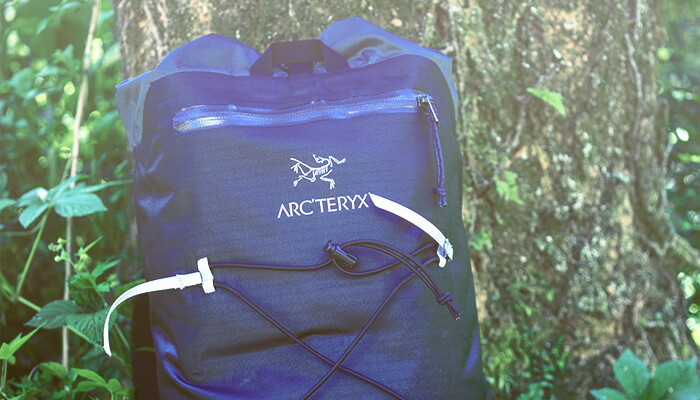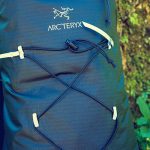table of contents
Over View
In the past, the category of mountain climbing backpacks was simple. At most, it would be "small" or "large" and as long as we didn't get the wrong capacity, we should have thought about which manufacturer we would use. But it's different now. In order to choose the right backpack for you, it became more important to consider not only one standard of capacity, but also the purpose of what kind of mountain you would like to climb and what type of mountain you would like to climb. When you look at the backpacks of subtle colors and shapes filled with different colors and shapes, lined up all over the walls of the mountain tools shop, you will be at a loss as to whether you can find the backpack that is most suitable for you. Good news for those people. The Arc'teryx ALPHA FL 30, which I will be reviewing, is a unique and extremely excellent backpack that is unique if it is used for a specific purpose. That's why it can be said to be a backpack with a unique personality. If someone who is starting to climb mountains for the first time tries to buy this backpack, I'll do my best. However, as soon as I realize that I have only had a little experience in mountain climbing and have started to become particular about mountain equipment, I would recommend that you try this backpack with all your might. That's how wonderful it is. The extreme discretion, integrity that specializes in concept, and simple, beautiful design created by shaves. From now on, I would like to fully discuss the appeal of this backpack and the points to be careful about.
Details Review
Let's start by focusing on the basics. The Arc'teryx ALPHA FL 30 is not a typical hiking option, but is a backpack focused on climbing and alpine climbing. So what are the requirements for climbing backpacks? Their first is "lightness" that does not restrict movement even a little in harsh situations, and "durability to tear and wear" that is difficult to break between narrow rocks or sometimes even when you pull up a backpack, and "comfort, ease of movement, and ease of carrying" that is less tiring when approaching, and makes it difficult to carry around with your center of gravity even when moving in a variety of ways during an attack, and finally "functionality" that allows technical equipment to be packed without waste. On the other hand, when choosing a backpack for a regular hike, you need to consider the "verticality" of how many different styles of mountain climbing (period, capacity, and climbing) can be used, as well as the "adjustable ability" to fit perfectly on your body so that it doesn't get tired even after carrying it on for a long time, and the "easy to use" of whether it is easy for beginners to experts to use. In this review, I would like to review all of these items, and then check both the evaluation as a climbing attack backpack and the evaluation in other ways.
weight
Considering the situation where you use a small, lightweight backpack, you only have to carry a day trip or at most one night. Naturally, there are fewer luggage spaces, so reducing the contents of the luggage is also more difficult than long-term mountain hiking. Therefore, the fact that the backpack itself is actually lighter is actually an incredible advantage.
So, let us imagine the weight of this backpack, which is 575g, just like the weight of a recently increased tea bottle. I had never used a backpack that weighed less than 1kg, no matter how small it was, before carrying this backpack, so to be honest, I had no idea that this weight would have such an impact. A backpack for normal mountain climbing is carried on your back, not with your shoulders, but with your shoulders, so you can walk for long periods of time without getting tired. It was because he believed this and didn't doubt it, and when he first saw this backpack, he couldn't hide his anxiety about the poor waist belt. However, in reality, I have walked the mountains with this backpack on my back many times, but I have never felt any fatigue in my shoulders (or rather, I have even had pain in my hip bones when I was carrying it on my back). Anyway, there's no point in complaining about the weight of the backpack.
Durability
There are two main points that determine the durability of a backpack. One is backpack fabric. The N400r-AC2 nylon 6 ripstop, the fabric for the main storage of the Arc'teryx ALPHA FL 30, is Arc'teryx's unique lightweight, durable, waterproof fabric. The high denier, sturdy fabric and seam tape also handles seams, making it almost completely waterproof, yet surprisingly lightweight. It also has the abrasion resistance required for use in climbing. To be honest, I can't find any weaknesses.
Another thing is that it is difficult to break down the sewing of the backpack and external attachments, but this backpack has extremely few external tape, belts, and attachments. Therefore, there is a smaller chance that it will break than other backpacks. Of course, there are no concerns about the few sewing and external attachments.
Comfort
Unlike large backpacks for long-term mountain climbing, small and lightweight backpacks tend to omit the pads, frames, cushions, pads, and adjustment mechanism on the back are often omitted.The backpack has only a plate-shaped pad on the back, the shoulder straps can only adjust the length of the waist, and only the tape belt, making them very poor. Since it is not a mesh structure on the back or a structure that takes into account the ventilation gaps in the back, which is a recent trend, when compared to a typical climbing backpack these days, it seems at first glance that you have to bear the comfort when carrying it on your back. Certainly, that might be the case for some people. However, as far as we can see from this review, this is enough to achieve this ease. The pads on the back are also more sturdy than I expected, and the shoulder straps are as light as possible, so this amount of cushion is enough, and there is almost no need for a waist belt.
Versatility
Depending on the backpack, various parts may be removable depending on the climbing style. However, this backpack cannot be expected. Because they are stripped to the limit, they cannot add or remove anything. If this were a more customizable and versatile backpack, there's nothing to say.
Functionality
The Arc'teryx ALPHA FL 30 is a backpack specialising in rock and snow climbing, and has removed unnecessary parts to the limit, and its characteristics are reflected in various parts. First of all, there is no canopy, and the top is the mouth of a waterproof roll top (which is the mainstream in modern waterproof staff bags), which is said to have been invented by Arc'teryx, and the mouth is further compressed and fixed with a buckle (sockets, crampons, etc. can be fixed to the buckle). In addition to the main storage, the only storage area is a zipper pocket with a key clip. Furthermore, the external attachment only has a loop on the front where you can attach an ice axe or something. Whether or not this is necessary or sufficient depends on what purpose you are using this backpack, but it is believed that it has the minimum necessary functions even for normal mountain hiking.
Ease of use
The ease of use that users want from a backpack varies from person to person, but I think there are probably no one who finds this backpack "easy to use" compared to other backpacks. That's how easy it is to use even for beginners, so it's completely stripped down. For example, the opening of the storage area is only the top, and it's a terrifying hassle to take out the packed items below. Since it is a completely waterproof backpack, there are no holes for the so-called hydration tube to pass through (they have no choice but to give up on waterproofing and take it out through the mouth of the roll top). There are almost no small pockets, so there is no place to store water bottles, food, maps, or other items that you want to take out immediately. You have no choice but to make these things yourself. This is the biggest reason why it's not recommended for beginners. This backpack must be difficult to use only for people who have been used to packing many times, and for people who have made full use of pouches and pockets other than this backpack to establish their own style to some extent.
Adjustment power
You can assume that there are almost no size adjustment functions available in large backpacks for long-term mountain hiking.
Score table
| item | evaluation |
|---|---|
| Brand name | Arc'teryx |
| Item name | ALPHA FL 30 |
| Reference price | 25,000 yen |
| Strong Points | Lightweight, highly durable, waterproof, and functionalities specialized for climbing |
| Cons | Versatility, ease of use, and adjustability |
| Recommended usage |
|
| weight | ★★★★★ |
| Durability | ★★★★★ |
| Comfort | ★★★★☆ |
| Versatility | ★★☆☆☆ |
| Functionality | ★★★★☆ |
| Ease of use | ★★☆☆☆ |
| Adjustment power | ★★☆☆☆ |
Specification table
| item | Contents |
|---|---|
| capacity | 23L (30L max) |
| weight | 575g |
| Back pad | Rigid, formed backpanel |
| Back length adjustment | Not possible |
| material | N400r-AC2 nylon 6 ripstop N100mr-HT nylon 6.6 mini-ripstop (primary collar) N70r-HT nylon 6.6 ripstop (extension collar) HD-80 Foam Burly Double-Weave Hypercell Foam |
| Number of air chambers | 1 |
| canopy | none |
| Opening | Roll top method |
| Hip Harness | 4 cm webbing hipbelt |
| Key clip | ◯ |
| whistle | × |
| Hydration | × |
| External attachment | Ice axe loop x 2 telescopic attachment |
| Other features | Zipper pocket with key clip |


